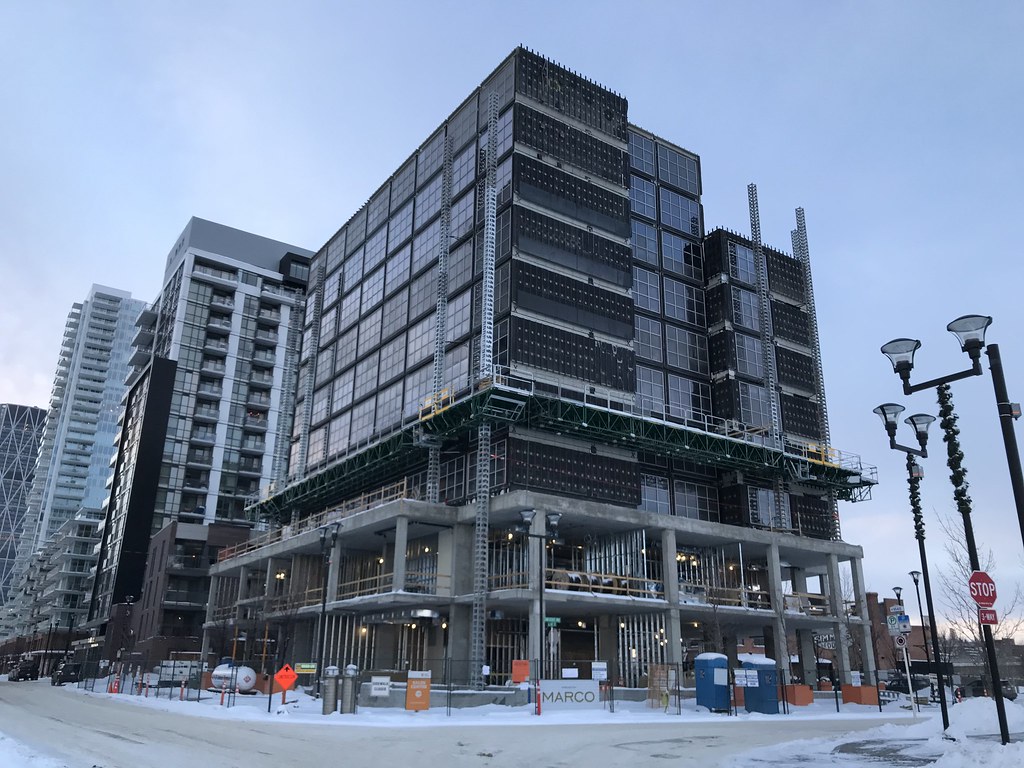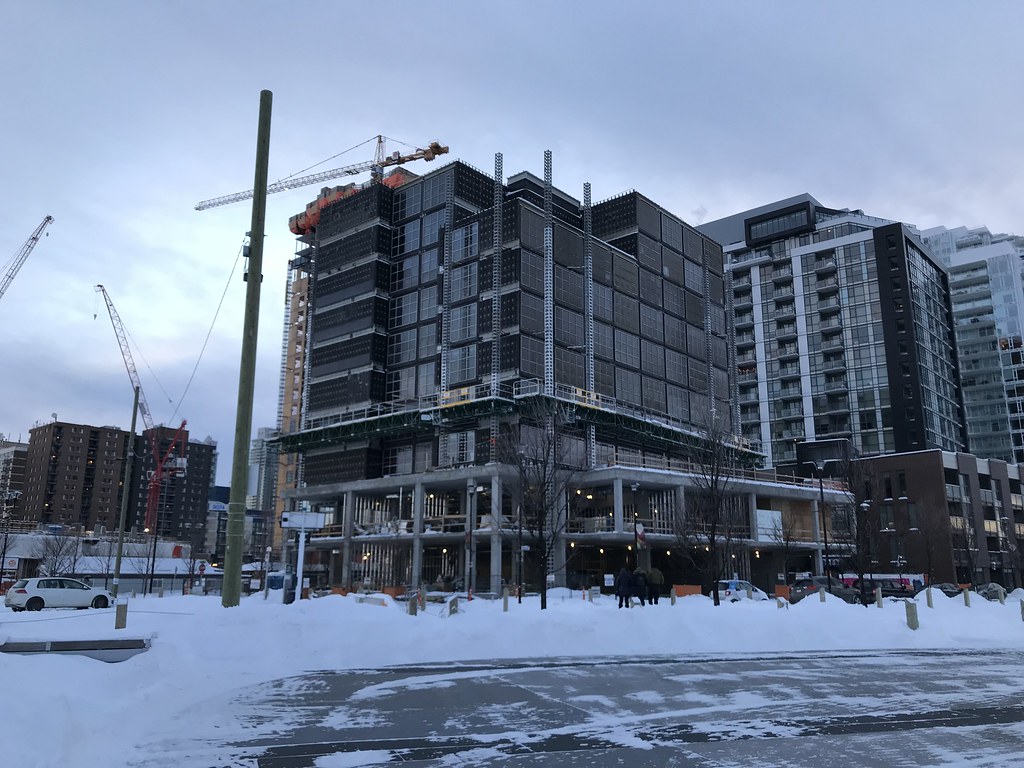It's been around for decades. There are facilities throughout North America and this is the first high rise to be built in Canada. It makes sense for a hotel with 120 identical, roughly 200 square foot shoeboxes or kit houses. It stops making sense for high rise residential with customized floor plates specific to a particular development and with every suite on a floor having a different layout with 500 square feet or more. There are developments with twin towers. There aren't twin developments.
Maybe this method could be used for low cost or transitional housing.

